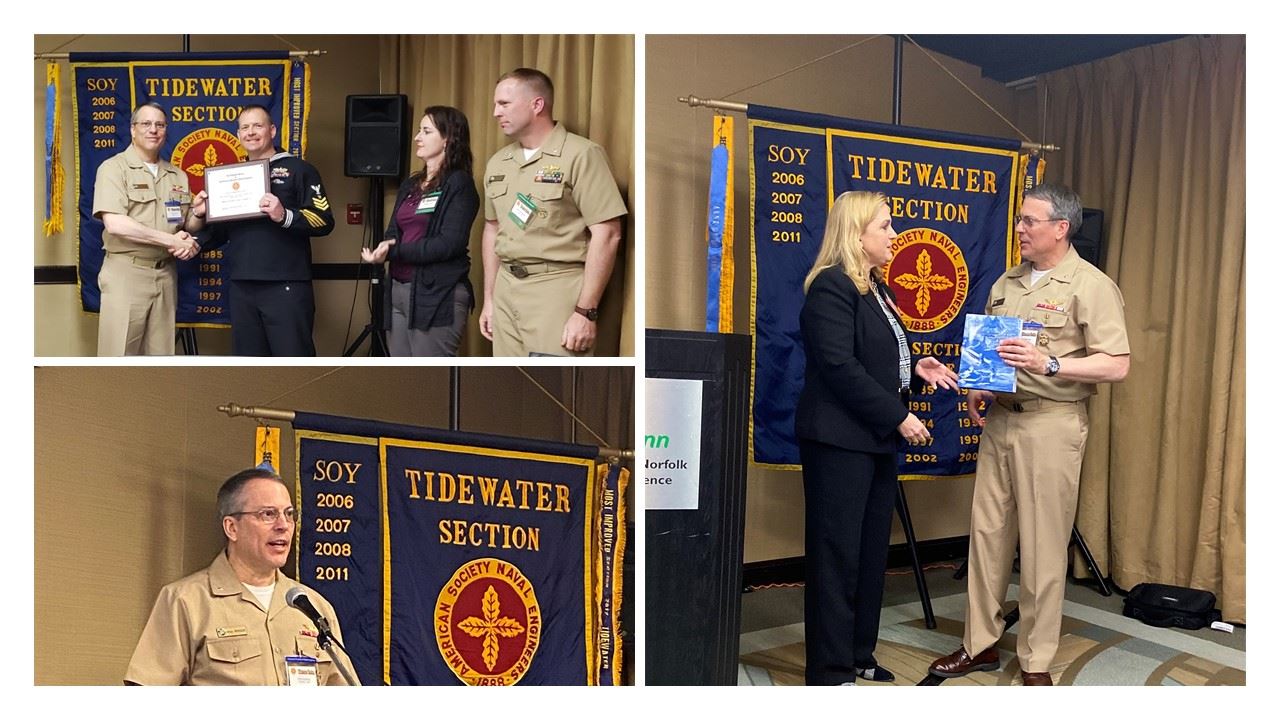Many thanks to our members and guests who attended ASNE TW’s January dinner/meeting program. The evening began with recognition and presentation of a citation to the ASNE TW Engineer of the Quarter (4th quarter 2019) to Hull Technician First Class (SW/EX) Jeffrey Crebs, USN. HT1’s Commanding Officer, USS McFaul (DDG 74) Rusty Williamson, was on hand to support his sailor. HT1 Crebs was very excited and honored to receive the award. He and his wife Michelle greatly appreciated the recognition by ASNE TW and for the recommendation of award from HT1 Crebs’ Commanding Officer.
Our guest speaker for the evening was RDML Paul Spedero, USFFC Fleet Readiness Officer (N02R). The Fleet Integrated Readiness and Analysis (FIRA) Office was established in November 2019 by ADM Grady with the intent to develop readiness metrics that integrate resourcing inputs to readiness outputs. The newly formed FIRA office is tasked to drive Navy-wide, centrally managed data governance and develop USFFC staff analysis and analytic skills. RDML Spedero serves as the Force Readiness authority to define, analyze, integrate, and articulate readiness through one set of Fleet readiness and material condition policies and standards.
RDML Spedero’s remarks centered on ADM Grady's Revolutionize Readiness Campaign Plan. “The goal is to ‘bend the curve’ on Readiness ... with urgency - work on the problem, not in the problem ... keep a steady strain avoiding boom or bust cycles and lastly - ‘stop talking and start doing.’ To responsibly grow and dynamically operate the Fleet, we must have effective and predictable sustainability. We must squeeze every ounce of Readiness out of every dollar we get. We must revolutionize how we identify, analyze, and visualize not only current readiness concerns, but also articulate barriers to readiness generation across all echelons and work toward expressing the resources required for the readiness output.”


